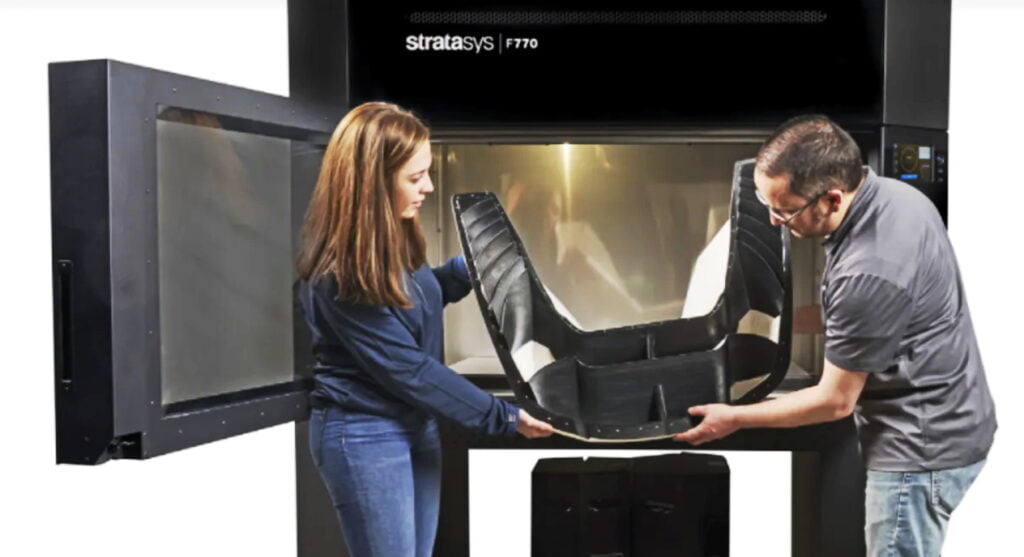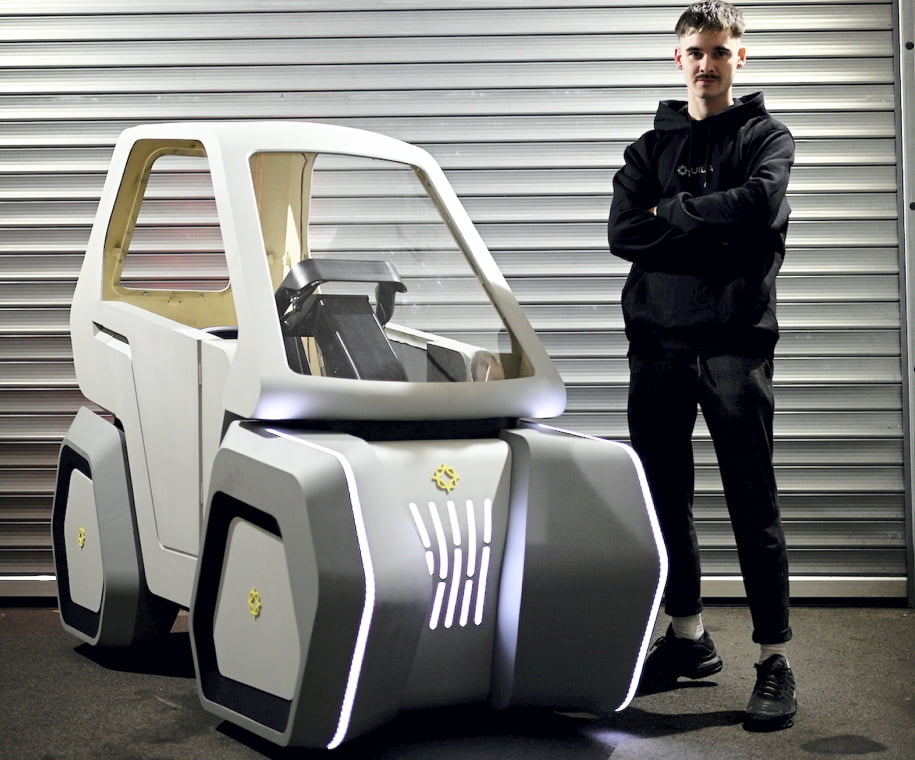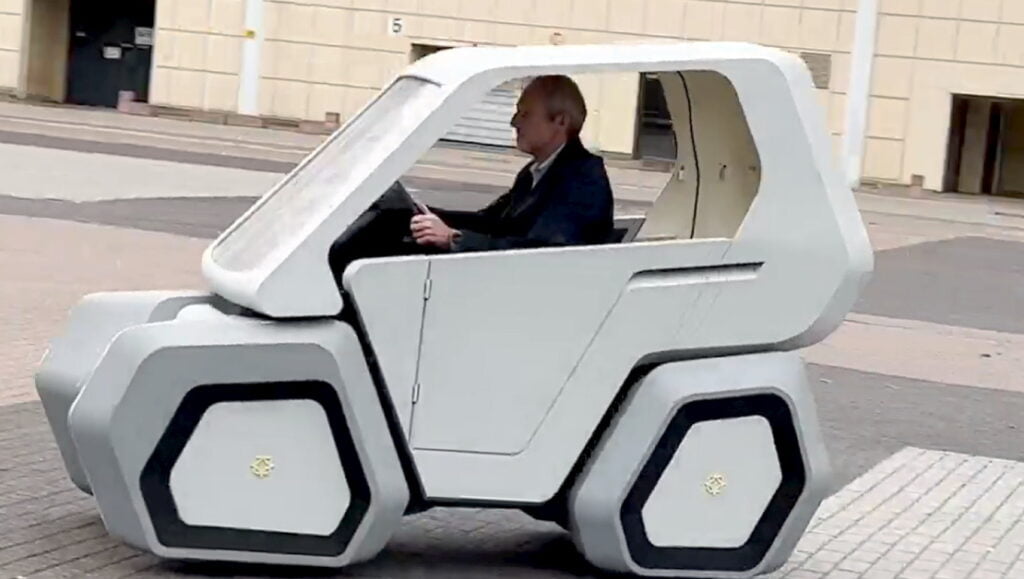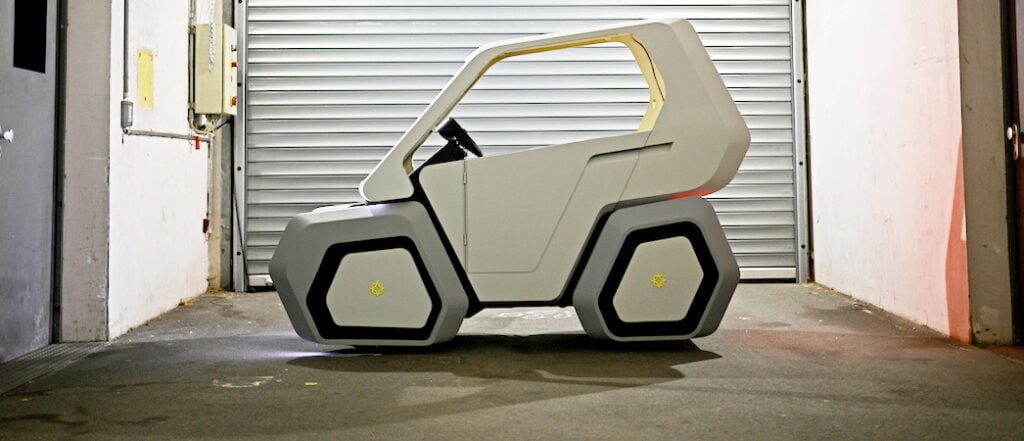Israeli technology used to create “instant” prototypes
It’s the electric bike of the future. And thanks to Israel’s cutting-edge technology, it can literally be 3D-printed overnight.
The quirky four-wheeler is part cargo bike, part electric vehicle (EV), which can seat two people, carry a 250kg load and reach 25km/hour.
It took the German innovation studio nFrontier little more than three months to develop Uila from scratch.
But it wouldn’t have been possible without the advances made by Stratasys, the startup turned publicly-traded company based in Rehovot, central Israel.
It provided the 3D-printing machines that allowed the engineers to produce prototypes within hours, rather than waiting weeks or months for specialist companies to turn their plans into reality.
Stratasys designs, produces and sells the machines – which look like giant microwave ovens – for their clients to use wherever they’re located.
While traditional 2D printers squirt ink onto paper, 3D-printers squirt layers of polymer on top of each other, gradually giving shape to virtually any design.

“It’s not enough just to have an idea. You need the ability to do the prototyping fast,” Yonatan Snir, VP Global Marketing at Stratasys, tells NoCamels.
“In this case, we were responsible for the body around the metal structure, for the steering wheel, for the chair and for everything else they need to put inside to make it work.”
Designing any new product involves trial and error, but the ability to produce a prototype in a matter of hours speeds up the whole process.
“The entire cycle is quicker,” says Snir. “You’re not dependent on other companies or supply chains to provide you your needs. With COVID we saw the challenge of having anything shipped from anywhere to anywhere. If you have the machines, then you’re able to do those cycles for yourself.

“It takes hours or maybe a day for each part to be printed and depends on how many machines you have.
“You send the file to print and you come back in the morning and it’s there. If it’s a big build with a lot of material, it can take longer, but the machine lets you know when it’s ready.”
Nowadays 3D-printing is a highly sophisticated industry, with a number of different methods available for different needs.
Sign up for our free weekly newsletter
Subscribe
In the case of the Uila, Stratasys used a technology that was invented and patented by the company’s founder Scott Crump in 1989.
Apparently he struck upon the idea when he decided to make a toy frog for his young daughter using a glue gun loaded with polyethylene and candle wax.
The resulting technology is today being used to print parts for Dream Chaser, the re-usable spaceplane that will deliver cargo to the International Space Station from 2023.
Stratasys machines are producing around 2,000 of the fixtures that are used to secure the tiles that protect the vehicle from 1,650 C (3,000 F) temperatures when it re-enters the Earth’s atmosphere.
Closer to home, an additional benefit of 3D-printing is that any design can be customized. A production line is geared up for mass production of identical components, but can’t adapt to one-offs.
The futuristic Uila has regular hub-and-spoke bicycle wheels behind an irregular hexagonal panel. A customer may decide they prefer a square panel, or a triangle. Or that they want it in red, blue, or a patchwork of colors.
The polymers used to make the vehicle are also remarkably strong, very lightweight and easy to recycle.
The Uila itself has pedals, like a traditional bike, and a chainless electrical drive train, which gives the driver a range of up to 70km on a single charge.
The company that designed the bike, nFrontier, hopes it will be licensed for the roads in Germany in 2024.
Its CEO, Daniel Buening, said: “We are proud to unveil Uila together with our partner Stratasys. Their technologies have been at the core of our prototype development and will be a key part of our production process.” He described Uila as “a truly sustainable, game-changing mobility solution.”

The Stratasys technology is a huge benefit for prototypes and smaller production runs, says Snir, but if demand for Uila runs to many thousands some parts may be produced more economically using other methods.
Stratasys is the result of a 2012 merger between Israel-based Objet and US-based rival Stratasys.
“We are the biggest company in the world in 3D printing and polymers,” says Snir. “Our solutions are being used by well-known companies like Apple and Google, as well as for the military, secret service, medicine, you name it – if there’s a physical product, you’ll probably find they have a machine of ours.”
Related posts

Editors’ & Readers’ Choice: 10 Favorite NoCamels Articles

Forward Facing: What Does The Future Hold For Israeli High-Tech?

Impact Innovation: Israeli Startups That Could Shape Our Future




Facebook comments